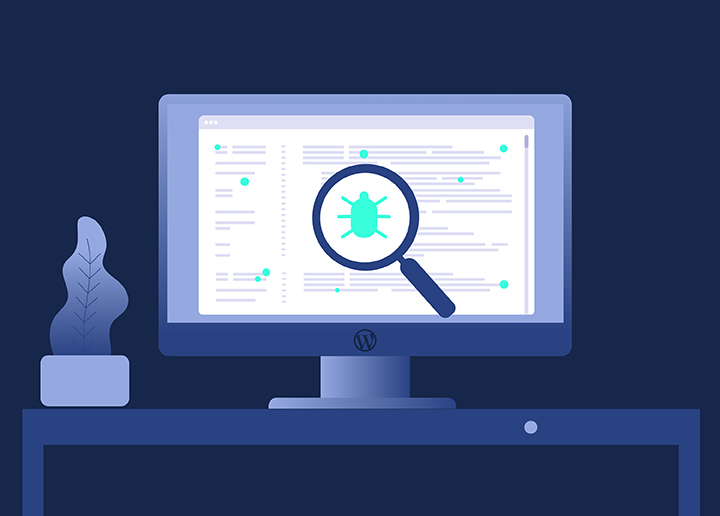If you want to protect wordpress from malware infection, the below-mentioned tips and methods will help you in keeping your site safe and secure. If you have an online presence, you need to prioritize security and if WordPress is your CMS, you definitely need to tighten it.
WordPress is used by over 40% of the websites worldwide and suffers from diverse critical vulnerabilities. However, if you take the right steps, WordPress security can be achieved easily.
Contents
ToggleMalicious Software in WordPress
Let’s just take an example of a report from Wordfence, about 1.6 million WordPress sites were hit with 13.7 million attacks in 36 hours from 16,000 IPs. Plugin Vulnerabilities, DDoS, malware and hacking attacks are frequent in WordPress ecosystem. Search engine algorithms are only able to block 15%-17% of infected websites. Hence, the protection of websites against malware contamination should be an utmost priority.
Not to say that sanctioning your website will not harm your organization and reputation. However, there are some things you can do to deal with whoever has Malware on your WordPress site, which is why we’ve included them on this page.
Best ways to Protect Your WordPress Website from Malware
Below are different alternatives to secure your storage space and minimize the risk of malware infection.
1. Make regular backups
Regular website backups can be an excellent method for spyware protection. These backups can immediately restore your data to its pre-malware.
It is advisable to have an offsite backup to have continuous access to your backups. You can use those backup files if your hosting provider is compromised due to a malware attack or in case of a power outage.
Some of the best WordPress Backup plugins are:
- UpdraftPlus
- BackupBuddy
- BlogVault
- Duplicator
- Jetpack Backups
- All in one Wp-migration
2. Keep Themes & Plugins Updated
A regular update of your company’s WordPress plugins, themes, and WordPress core is another way of keeping for malware protection. As per a survey, 39.3% of contaminated WordPress sites used an outdated version of WordPress. Make sure to update Plugins and themes as soon as a new version arrives.
3. Update your Hosting Plan
If your family is currently using shared hosting, consider changing to a popular WordPress hosting plan or a better-suited tailored hosting course of action for commercial websites, such as VPS or a dedicated server.
However, more advanced web hosting plans are considerably more expensive; they also include more security mechanisms that can protect your primary website. Such options typically involve 24-hour monitoring, security software, SSL certification, etc.
4. Use SSL and HTTPS
If you have a fully packed e-commerce website, switching to HTTPS is crucial. With the up-gradation of knowledge for data security of visitors, web browsers started giving a warning for non HTTPS websites.
HTTPS is the more stable version of HTTP. It encrypts all the communication information of visitors and your website. To get an HTTPS activation, you have to get an SSL certification from a competent platform.
SSL certificates are tied to a green “padlock” over your stunningly addressable browser.
Use a free service like Let’s encrypt to install SSL on your website.
5. Use strong passwords and enforce them.
To avoid cyber-attacks on your WordPress profiles, you should have a strong password with a combination of letters, numbers, and symbols. However, many of us have a habit of using repeated and easy-to-guess passwords for our digital estate.
A password should be at least eight characters long and should mix uppercase, lowercase, symbols, and numbers.
Practically, managing such passwords is very difficult to remember. Therefore you can use a password manager like LastPass.
Password is a hectic task. You should get a reliable account to store your historical information, WordPress dashboard, hosting saving accounts, domain provider account, and other accounts connected to your website. You should update your password at least once a month to reduce the risk of cyberattacks.
Use security plugins like Wordfence, recaptcha to automate wp security.
6. Use DDoS Protection
A DDoS attack is a malicious attempt against your server bandwidth, where the attacker uses multiple programs and systems to disrupt the normal traffic by overwhelming the target or its surrounding infrastructure with a flood of Internet traffic. This results in a server slowness or crash.
If this worries you, then we recommend you to use Sucuri or Cloudflare premium plans.
Cloudflare uses its huge CDN (content distribution network) to shield your WordPress site from DDoS attacks, making your site more secure and fast. After proper scrutiny, firewalls will allow genuine visitors and search engines for information fetching. If a firewall observes any suspicious behaviors, they immediately block wary users, hackers, and spambots. Seahawk can help you recover & repair a hacked WordPress site.
7. Don’t Use Nulled Theme/Plugins
If you frequently use third-party unofficial websites to get WordPress themes and plugins it is possible that they have malware.
Use a service like VirusTotal to scan files for any suspicious malware and only install them onto your website afterward.
Final Thoughts
Protecting your site from malware is one of the most important tasks, and you shouldn’t avoid it or take it lightly. WordPress makes this easier, as it offers a secure foundation, but it’s still easy to leave yourself open to vulnerabilities if you don’t take these countermeasures precautions. It’s terrifying to discover how many of your websites are potentially compromised. You should, fortunately, not leave any options to chance. Use the advice in this article to safeguard your company’s website against malware.
Do you want to make your website secure from malware and look for an agency to assist you with WordPress Malware issues? Don’t hesitate to connect with Seahawk!















